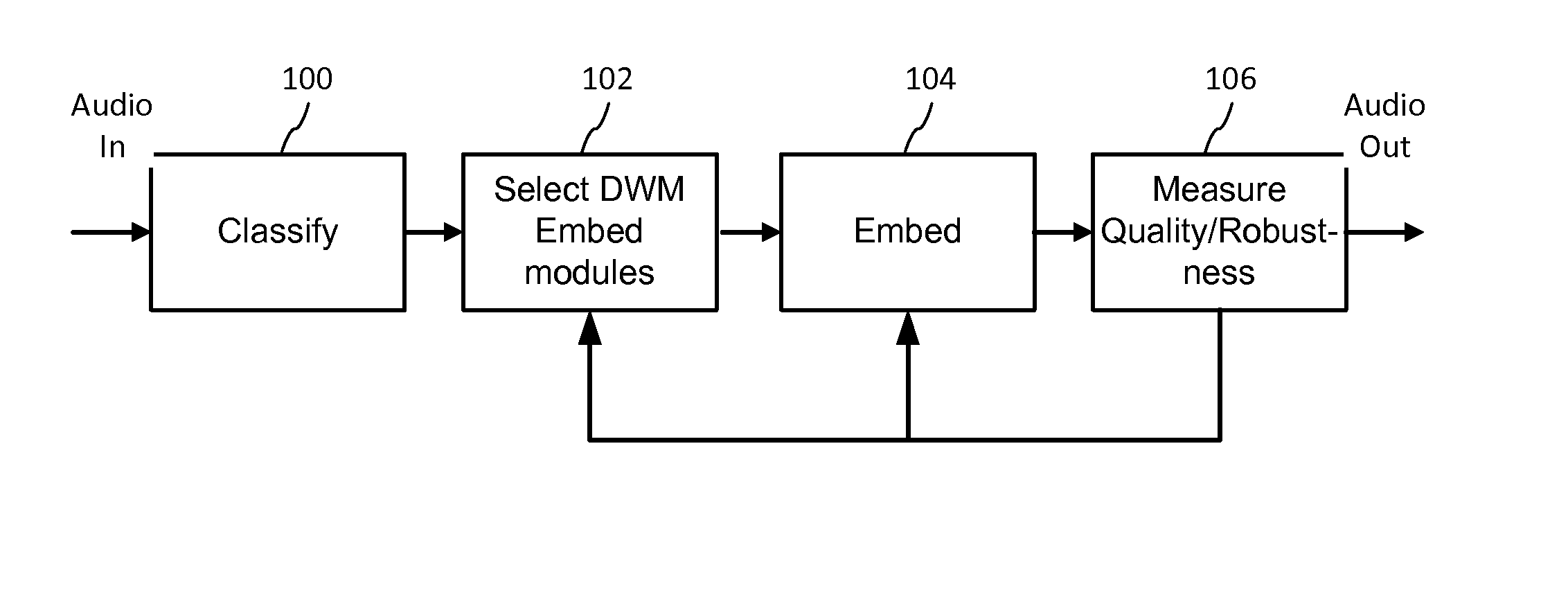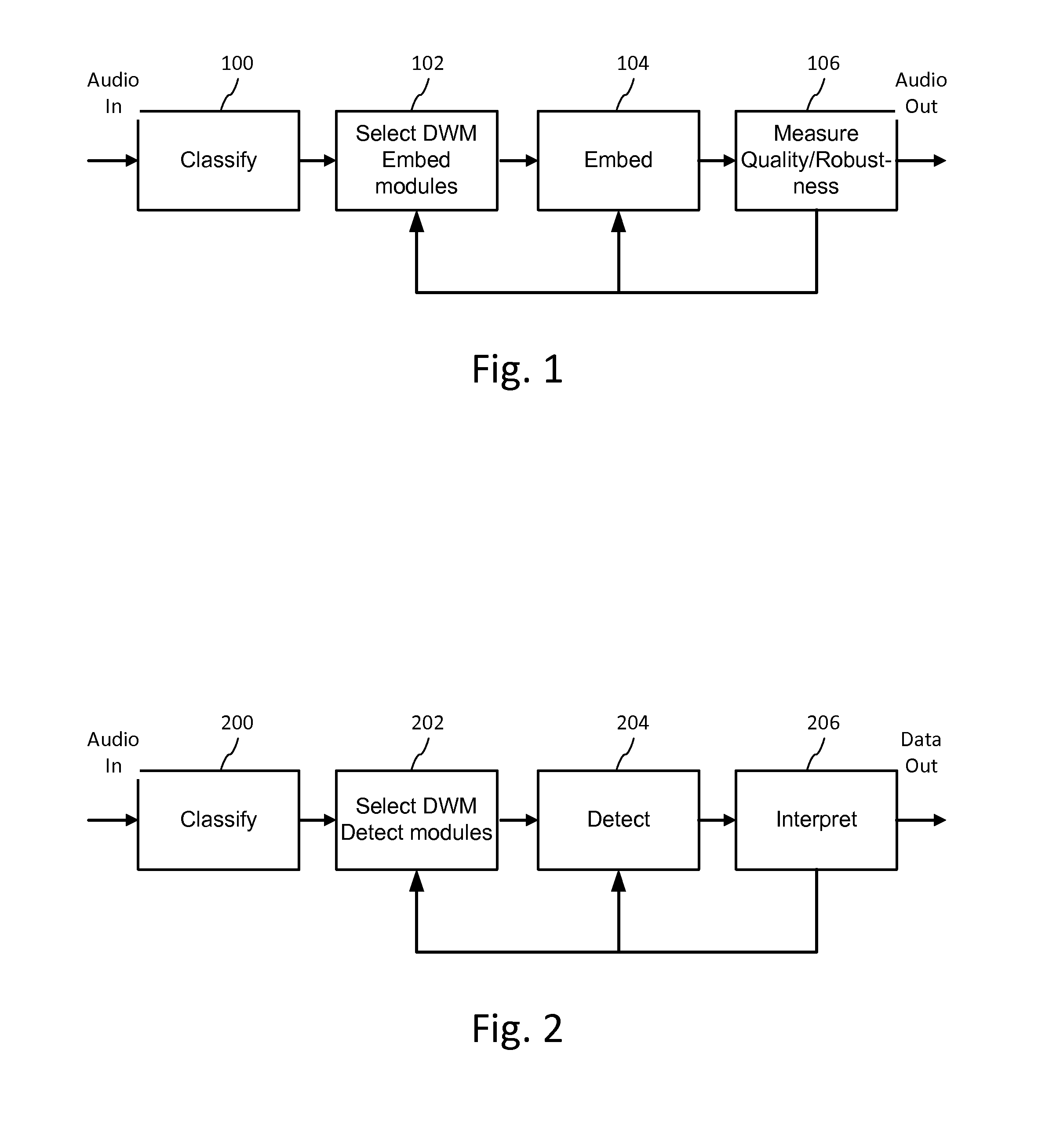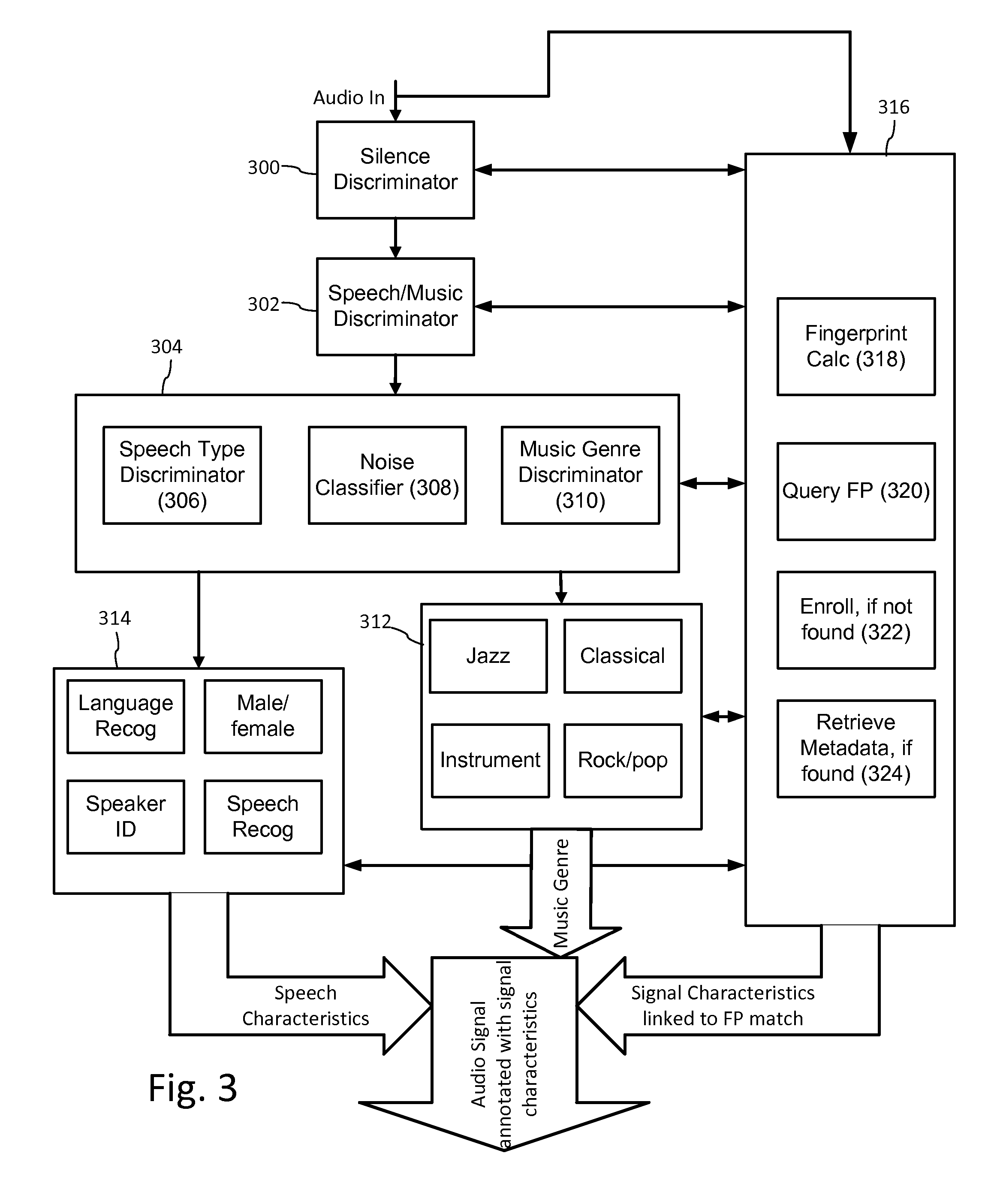Multi-mode audio recognition and auxiliary data encoding and decoding
a multi-mode audio and data encoding technology, applied in the field of audio signal processing for signal classification, recognition and encoding/decoding auxiliary data channels in audio, can solve problems such as false positive or false negative recognition, and achieve the effect of improving communication over a network
- Summary
- Abstract
- Description
- Claims
- Application Information
AI Technical Summary
Benefits of technology
Problems solved by technology
Method used
Image
Examples
example encoding
[0207 Process
[0208]Having described several of the interchangeable parts of the embedding system, we now turn to an illustration of the processing flow of embedding modules. FIG. 8 is a diagram illustrating a process for embedding auxiliary data into audio after, at least initially, pre-classifying the audio. The input to the embedding system of FIG. 8 includes the message payload 800 to be embedded in an audio segment, the audio segment, and metadata about the audio segment (802) obtained from preliminary classifier modules.
[0209]The perceptual model 806 is a module that takes the audio segment, and pre-computed parameters of it from the classifiers and computes a masking envelope that is adapted to the watermark type, protocol and insertion method initially selected based on audio classification. Preferably, the perceptual model is designed to be compatible with the audio classifiers to achieve efficiencies by re-using audio feature extraction and evaluation common to both process...
PUM
 Login to View More
Login to View More Abstract
Description
Claims
Application Information
 Login to View More
Login to View More - R&D
- Intellectual Property
- Life Sciences
- Materials
- Tech Scout
- Unparalleled Data Quality
- Higher Quality Content
- 60% Fewer Hallucinations
Browse by: Latest US Patents, China's latest patents, Technical Efficacy Thesaurus, Application Domain, Technology Topic, Popular Technical Reports.
© 2025 PatSnap. All rights reserved.Legal|Privacy policy|Modern Slavery Act Transparency Statement|Sitemap|About US| Contact US: help@patsnap.com



